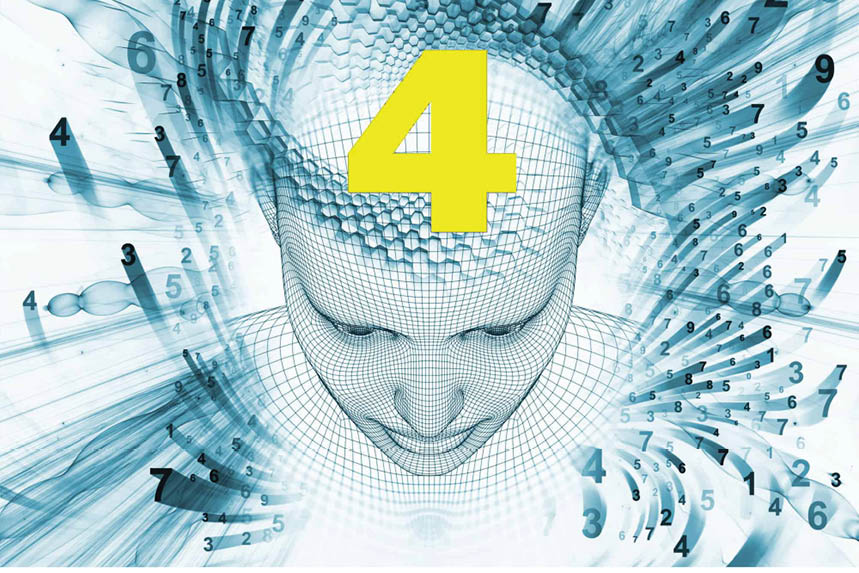Number four is an auspicious number in occult sciences. It is the number for healing the sick. In spiritualism, on a scale of one to seven, number four is the fulcrum, the stable point of rest between opposites. It is a state of perfect balance and harmony between ‘Life and Form’ i.e. consciousness and its manifested vehicle. It is the pause between spirit and matter. In this pause, there is stillness, equipoise and a germination of ideas and ideals.
The pantheon of Hindu deities have four hands, sometimes, holding the symbol for which they stand and are worshipped e.g. the Trishul in the hand of Lord Shiva or the Goddess of wealth, Laxmi, pouring out a stream of coins, always from the fourth hand. In the Universe, four stands for beauty and balance in nature. It’s a basic number e.g. the four seasons which inspired composer Vivaldi to produce the immortal piece of music bearing the same name, or the four directions – North, South, East and West.
In ancient India, there were the four Vedas – the Rigveda, the Atharvaveda, the Yajurveda and the Samaveda; there were four castes or classes in which society was broadly divided viz. Brahmins, Kshatriyas, Vaishnavas and Shudras and the four Ashrams or stages in life viz. Gurukulashram, when one is a student under a Guru; Grihasthashram, when one marries around the age of 18 and starts a family; Vanaprastha ashram or retiring into a forest(van) to ‘let go’ the pleasure of youth and prepare for old age (this was around 60 years) and Sanyasashram, where one had to practice Vairagya (to let go everything) and practice Dhyaan ( to meditate on one’s real self or Sakshat Brahmaswaroop, also called atma-swaroop).
The essential characteristic of number four is creativity. Hence, if you were born on the fourth day of the fourth month or if this number is powerful in your horoscope, you will be capable of producing great works of art, as a painter, artist or author, but only if you nurture that creativity with hard work and dedication.
In theosophy, the number four is the manifestation of the ‘third aspect of the Blessed Trinity. The ancient Orphic religion, whose number was four, had beauty as its key-note and used music and art in religious worship. God or the highest good was the principle of beauty in the universe and ugliness in any form was regarded as the greatest evil.
Most artists and creative persons have this number and they are extremely sensitive by nature. They need harmony and peace of mind in their personal lives, or else, they can suffer great agony in its absence. These gifted individuals are susceptible to mental depressions, restlessness, conceit, jealousy for more gifted persons and often suffer from extreme alteration of moods, or what psychiatrists call, mood-swings. They are spontaneous, passionate and emotional; difficult to live with because they are unbearable in times of frustration and failure to achieve perfect self-expression, e.g. Van Gaugh.
In the middle ages in Europe, of all the arts, the Opera represented number four, since it was a perfect synthesis of various branches of art, including drama, literature and music. In one of the smaller Zoroastrian prayers, we pay homage to the powerful number four in the ‘chaar disha no namaskaar’. The esoteric meaning behind this prayer is homage to every creation of Ahura Mazda, bowing in all four directions, so as not to miss out on anyone, also signifying unity in diversity – by bowing in all four directions to the grace of the one and only – Ahura Mazda!
- My Revolutionary Diet! - 16 November2024
- Jamasji-James Bond’s Adventures… - 26 October2024
- Optimum Wellness – Mind, Body And Spirit! - 14 September2024
